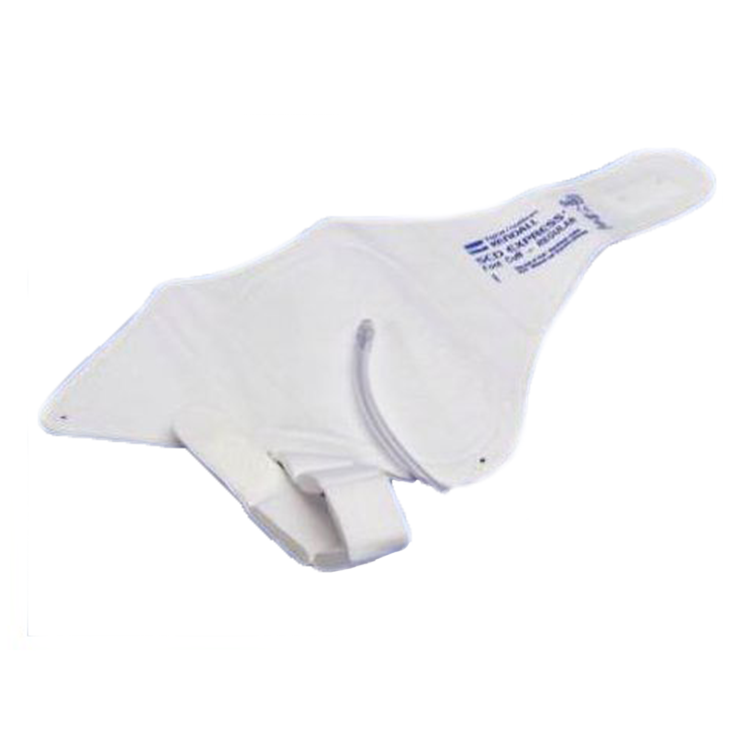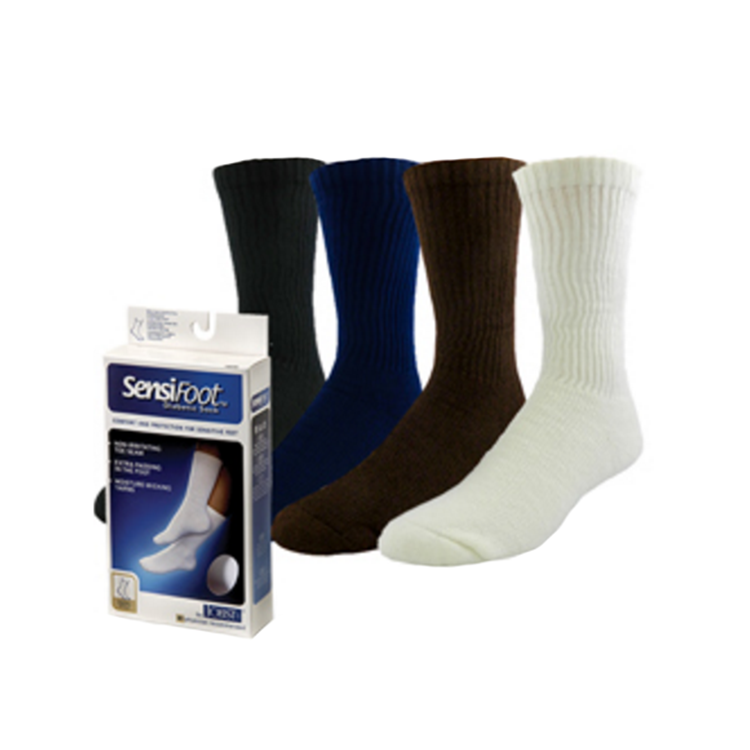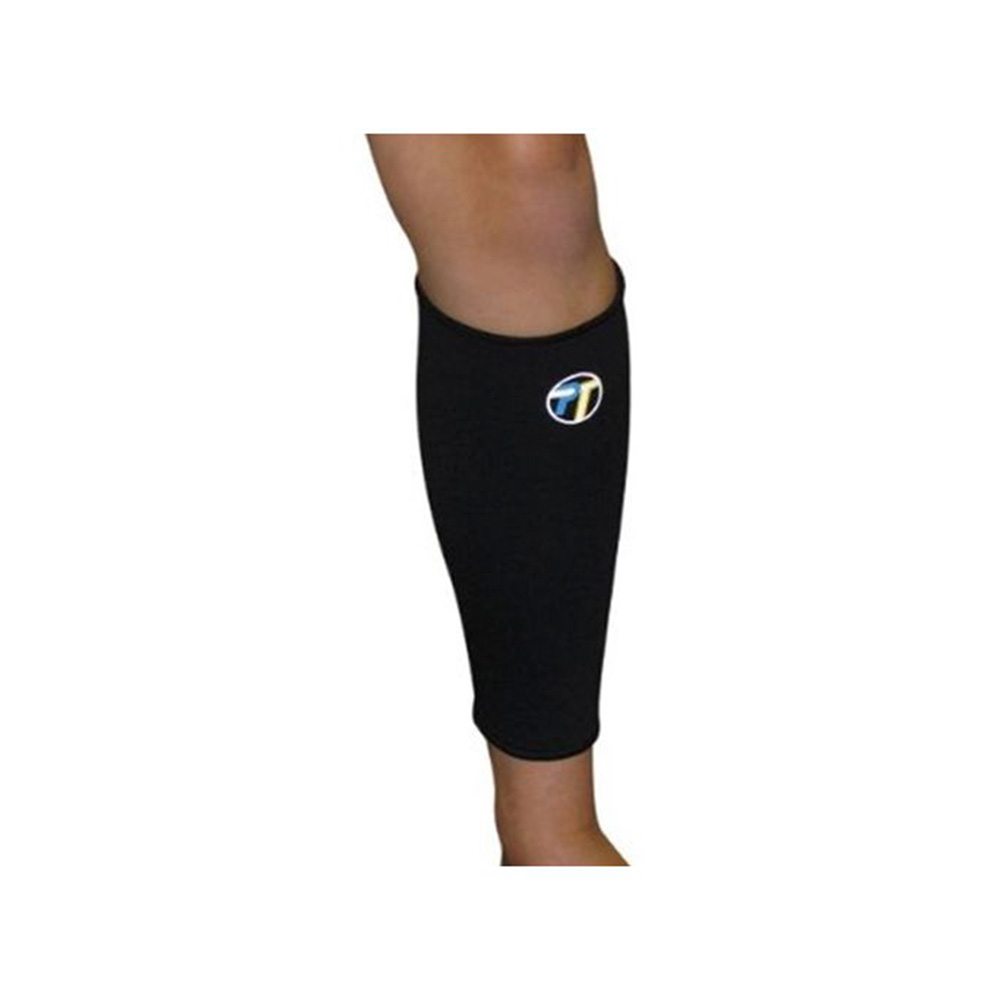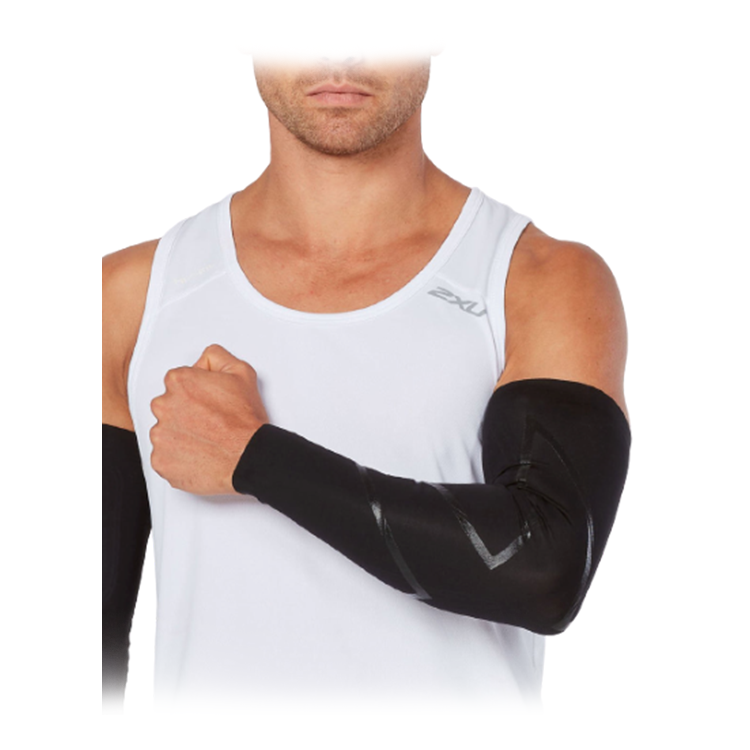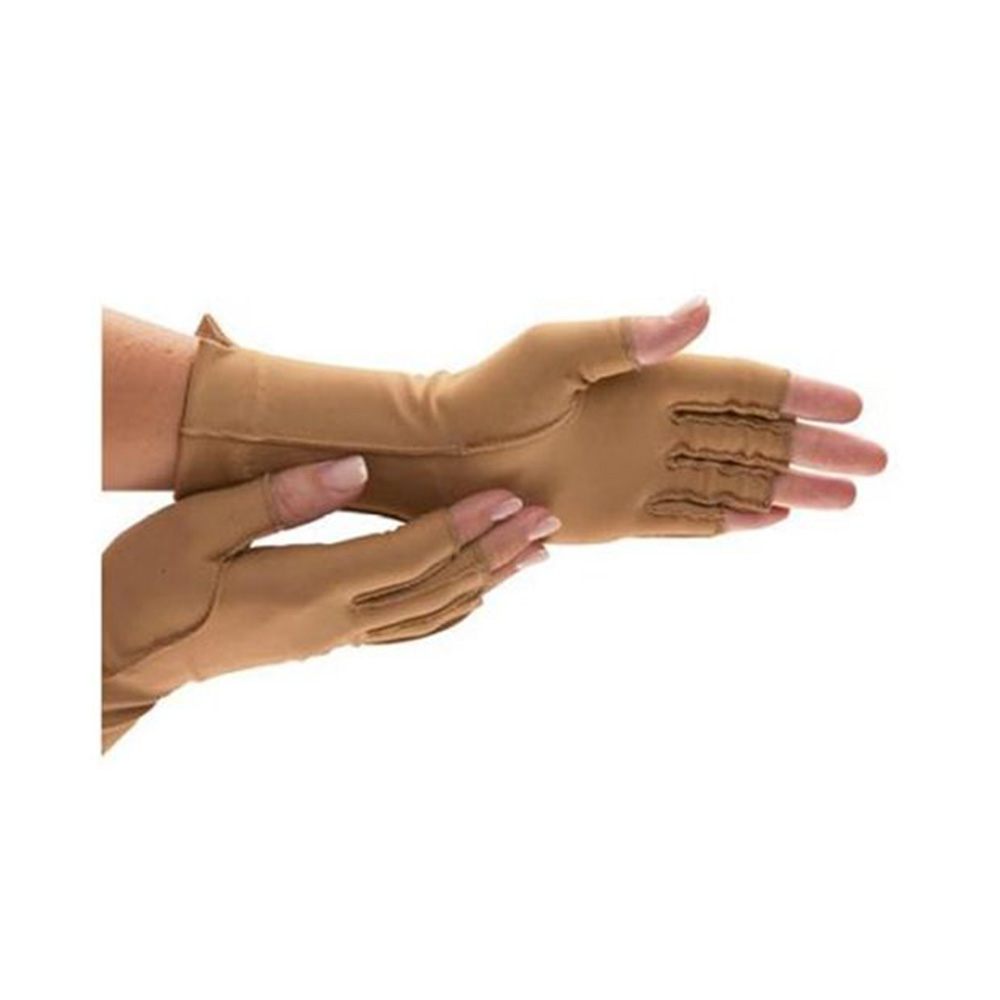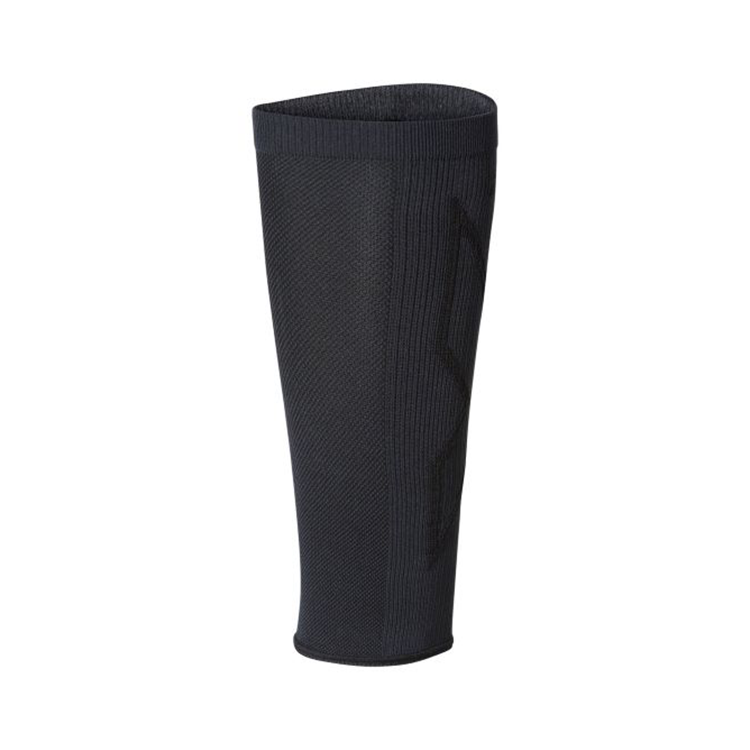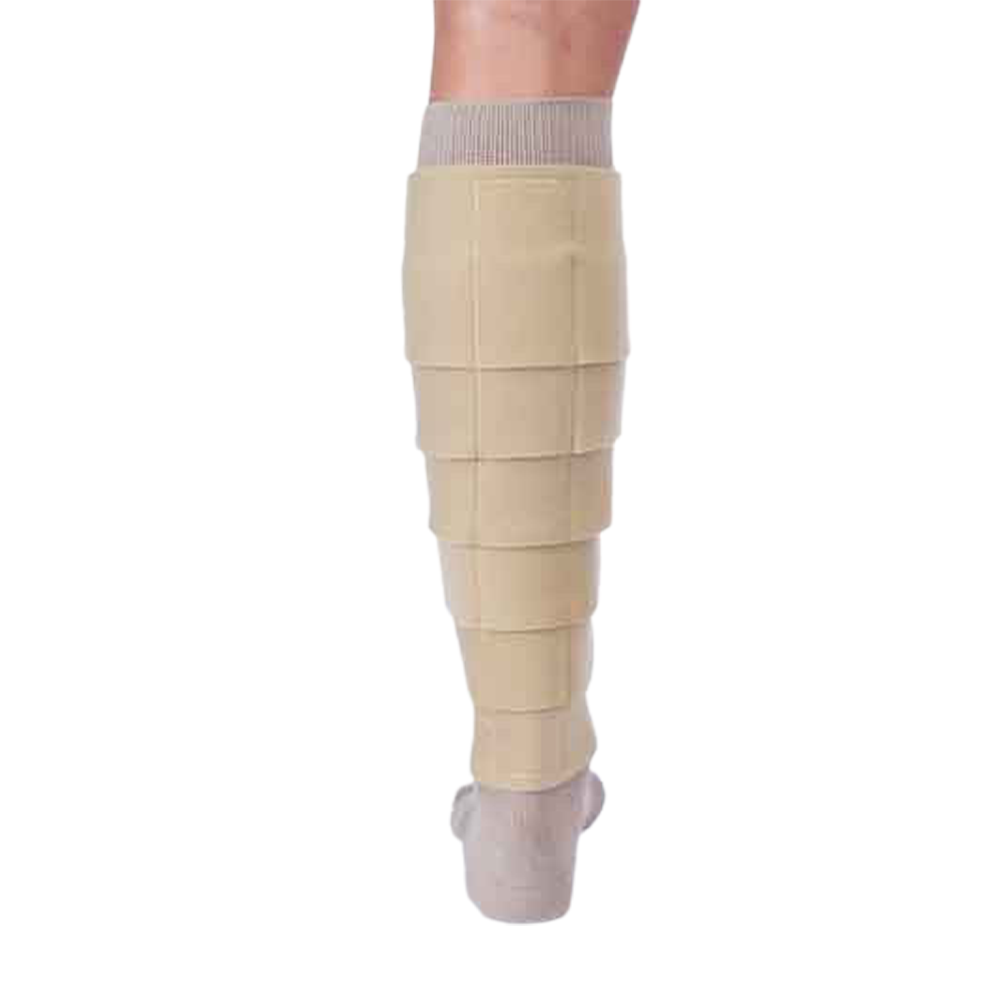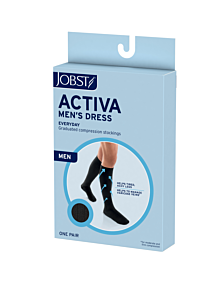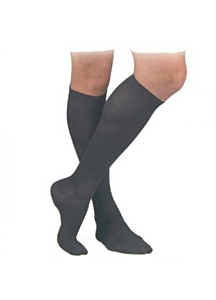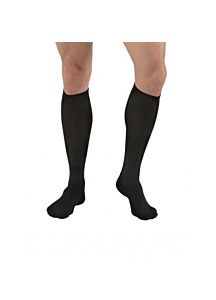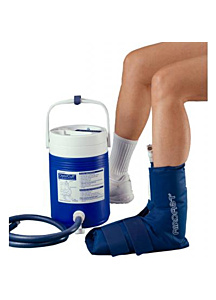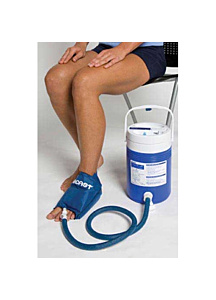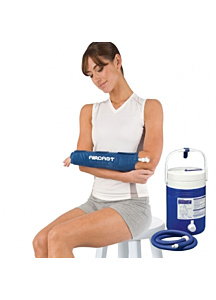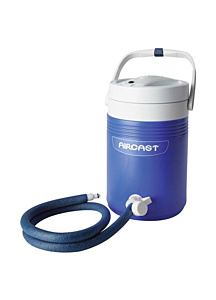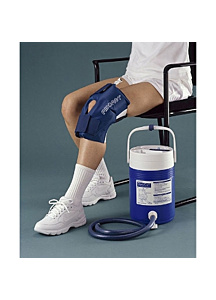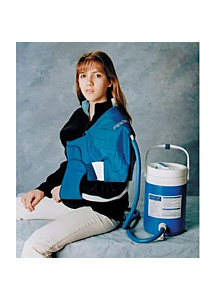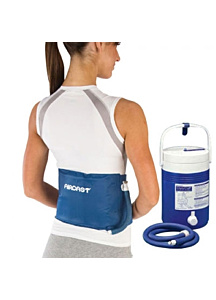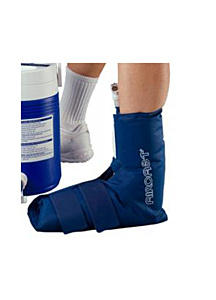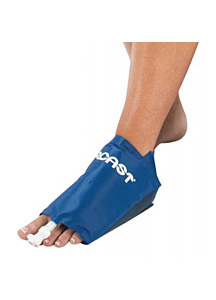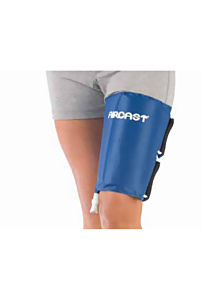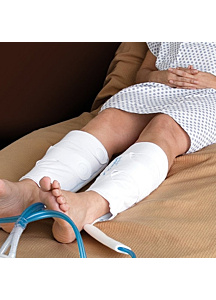Compression Therapy
What are compression stockings?
Compression stockings (or "compression hosiery") apply pressure to your legs to help the veins in your legs carry blood back up to your heart. Compression therapy usually utilizes gradient compression stockings, or graduated compression stockings, which means the most concentrated compression (or pressure) is at the ankle and the pressure reduces further up the leg.
Compression Stocking Brands
Sigvaris Compression Stockings: Originally founded by a doctor more than 140 years ago, Sigvaris" high-quality and innovative products have made them a global leader in compression therapy products. Healthcare professionals often complain patients purchase prescribed compression stockings but don"t continue use because the stockings are difficult to don, uncomfortable, and unattractive, so Sigvaris responded by creating compression hosiery which addresses all those issues. The majority of compression manufacturers use spandex in the fabric for compression stockings, but Sigvaris utilizes double covered yarn so your skin isn"t exposed to the spandex (feels soft to the skin), the stockings are easier to put on, and the entire product is more durable.
Aware that there are many different uses for compression socks and stockings, Sigvaris has created several different product lines to more specifically address people"s needs. Women wanting the benefits of compression therapy without sacrificing on comfort and fashion appreciate that Sigvaris currently has the sheerest hosiery (available in the 20 - 30 mmHg compression) on the market with the EverSheer stockings. Because constantly pulling up slipping stockings isn"t sexy or comfortable, the Sigvaris patented thigh band utilizes silicone for superior grip (meaning once you"ve put them on they won"t come down until you take them off).
For comfort during work or leisure, Sigvaris" cotton compression socks are constructed from world class cotton of the highest quality; the cotton seamless socks can be used safely by people with diabetes. Athletes will appreciate Sigvaris added patented Dri-Release fabric to their athletic compression socks to keep feet dry, cool, and odor free. Once you put on any of the Sigvaris compression products you"ll immediately feel what the industry refers to as "the Sigvaris difference."
Jobst Compression Stockings: Another global leader of compression therapy products is the Jobst company. Jobst and Sigvaris are often the two brands people are most familiar with and associate with quality compression stockings.
While many companies base stocking sizes from a customer"s shoe size, Jobst utilizes a customer"s ankle measurement to base product size on for a more accurate fit. All Jobst compression socks employs moisture wicking technology to keep you drier and cooler.
Like Sigvaris, Jobst provides a wide variety of products to match the everyday needs of men and women in both professional and casual situations. The UltraSheer stockings are Jobst"s most popular products, and similar to the Sigvaris EverSheer line, can be worn without sacrificing style.
Activa Compression Stockings: Activa offers a variety of compression socks and stockings to fit the lifestyle needs of both men and women. Activa uses numerous measurements to assure a more accurate fit. On ActiveForever.com, at the bottom of each Activa compression product there will be a sizing chart to inform you of the measurements needed, and the Activa sizes which correspond to your specific measurements. Activa prides themselves on being an affordable compression stocking choice, in addition to having products which are easy to care for.
Who Uses Compression Stockings?
In the past, many people associated compression stockings as something only elderly women (think grandma) wore. Presently, more and more people are realizing the many benefits of compression therapy products. Medical compression stockings don"t require a prescription for purchase, but often your doctor will prescribe compression stockings for varicose veins, blood clots, and other circulatory issues.
Athletes are raving about the benefits of wearing compression stockings during and after athletic activities (training and competitions). Studies support athletes claims that compression stockings relieve muscle soreness, and help them recover more quickly (from both training and injuries).
Pregnant women suffer from swelling in the lower body, leg fatigue, and "heaviness" which individuals with varicose veins also suffer from, so compression stockings can be worn during pregnancy to help alleviate many of those uncomfortable symptoms. Sigvaris has maternity compression panty hose specifically designed for wear during pregnancy.
During air travel there is a risk of blood clot formation, and compression stockings can be worn to decrease that risk. Additionally, sitting for long durations during travel by plane or auto can cause swelling and aches in the lower body; travelers are discovering compression stockings relieve those issues. Flight attendants have long known the secret of wearing compression stockings to reduce aches, pains, and swelling not only from travel but from being on their feet for long hours.
It is obvious using compression stockings has advantages for people with healthy blood vessels as well as for people with vascular health conditions. Whether you have a job which has you on your feet or sitting at a desk all day, using compression stockings can benefit your health. For healthy blood flow in your legs you should get an average of five full strides every half hour. If you"re sitting at a desk all day odds are that isn"t happening, so wear low level compression stockings to help move the blood back up your legs. If you"re standing most of the work day, but not necessarily walking (i.e. you are a cashier or clerk) utilize compression stockings to prevent swollen and painful feet and legs.
How to Use Compression Stockings
It is important to note you never sleep overnight wearing compression socks or stockings (take them off before going to bed). The key to compression socks is to put it on first thing in the morning. If you are taking measurements to figure out what size compression stockings you need, you"ll want to do that first thing in the morning as well. Remember as soon as you start walking around the blood begins flowing down your legs, so you want to put on your compression socks before you begin walking around. With vascular health conditions, as soon as the blood starts pooling to your legs the swelling will begin and it will be harder to don the stockings.
The key to donning compression stockings is to get your foot and heel into the stocking before pulling it up to cover the rest of your leg. There are donning gloves (which also help prevent snags from your nails or jewelry) and aids to help you put on compression garments.
All the compression socks ActiveForever.com sells are high quality and durable, but to further increase the life of your compression hose you may want to wash them in washing solutions made specifically for your compression socks, such as Jobst Jolastic Washing Solution. After washing let the stockings air dry instead of putting them in the dryer.
Understanding Compression Levels
Between all the different brands, colors, sizes, types, and compression levels of the wide variety of compression socks that are available on the market, shopping for compression stockings can be overwhelming. We don"t like feeling like a deer in the headlights when we"re shopping, and we want you to have a positive shopping experience by understanding what the different levels of compression stockings mean.
Compression socks are grouped in different categories indicating the strength of the compression (or pressure) around your leg created by the stocking. A number range will be followed by the letters "mmHg" which stands for "millimeter of mercury" and is a unit used when measuring pressure (don"t worry, you don"t need to know that). What you do want to know - the lower the mmHg number, the less the graduated stocking will squeeze around the leg (and the higher the mmHg number, the greater the pressure of the stocking will be around the leg). There are many different brands of compression stockings, but they all use the same compression levels to describe their products:
8 - 15 mmHg compression stocking level: These stockings provide a "gentle squeeze," are available over the counter in many pharmacies or medical supply stores, and are often recommended for people who are experiencing aches and fatigue in their legs. People who travel often, are on their feet for long hours (often due to work), and pregnant women are all examples of people who use low level compression stockings to experience relief from leg pain.
15 - 20 mmHg compression stocking level: These compression stockings will have slightly more pressure around the legs, and are often recommended to people whose legs are prone to swelling and fatigue. This compression level is also called "therapeutic compression." Pregnant women, people with genetic circulatory issues, or who suffer from spider or varicose veins are all examples of people who would wear this compression level of graduated stockings to experience leg pain relief.
20 - 30 mmHg compression stocking level: Doctors recommend this compression level for people with varicose veins (including pregnant women with varicose veins during pregnancy), who have just had vein surgery, or those who suffer from "heaviness" and more extreme swelling in the legs. This level and all higher compression levels are also referred to as "medical grade compression."
30 - 40 mmHg compression stocking level: The previous level could be called "firm," and this level of sock would be "extra firm." This is the most widely prescribed stocking for chronic venous insufficiency, which occurs when damaged valves in the leg"s veins lead to blood pooling in the leg and causes swelling and pain (can lead to skin damage and leg ulcers). The increased support provided by this stocking level means more leg health issues can be addressed including edema, varicose veins, and blood clots.
40 - 50 mmHg compression stocking level: This compression level provides much stronger pressure, and is prescribed for people suffering from severe varicose veins, edema, venous ulcers, and severe lymphedema, more severe versions of health conditions which have been discussed above, and more.
50 - 60 mmHg compression stocking level: This level offers the most compression or pressure around the legs. Doctors recommend this level of graduated compression for very severe circulatory conditions and issues, such as severe post thrombotic syndrome. Due to the augmented compression, these will be the most difficult stockings to don so caregivers may need to provide additional assistance.
Your doctor will do the necessary tests and analysis to determine your need for compression therapy and which compression stocking level would be the most beneficial for you.
Other Types of Compression Stockings
Compression stockings can be a somewhat general term used to describe several different styles of compression hosiery. Compression stockings are available in different lengths including knee high stockings, thigh high stockings, and full length pantyhose.
Knee high compression stockings are the most popular. Some customers feel the shorter length is easier to apply and thus prefer the knee high options. It is important to note the calf muscle is key to pumping blood from the leg back up to the trunk of the body, so for a compression stocking to be effective it needs at least cover the calf.
Thigh high compression stockings may be recommended if leg swelling extends above the knee or when very large varicose veins are present. Women who travel frequently or work in situations requiring long hours on their feet enjoy being able to experience the benefits of compression stockings while wearing them under skirts. Thigh high compression stockings of the past have reputations for being difficult to put on, slipping frequently, and being far from stylish. Fortunately, manufacturers listed to customers" complaints and the thigh high compression stockings we sell currently are very stylish (many offer lace edging for ladies), incredibly comfortable, easy to don, and stay in place better. Often people who have to work trade shows comment on how much they appreciate being able to wear thigh high compression stockings while traveling and then work on their feet all day comfortably and without constant readjustment of the hosiery.
To provide even more options, compression stockings are available in both open toe and closed toe designs. A closed toe is what you"re most familiar with, and probably what you think of whenever you think of socks or stockings.
Open toe compression stockings can be beneficial for people who want to wear a sock over the compression stocking, those with arthritic toes, or to allow more air to access the toes (if there is a cut or fungal infection on a toe the increased air may help increase the healing).
Compression stockings can also refer to compression socks. With the word "stockings" most of us imagine a sheer and/or silky fabric (and this is precisely what some compression socks are), but there are also compression socks with the look and feel of cotton athletic or dress socks. Compression socks still utilize rubber or elastic fibers to provide various levels of compression, but some people prefer the look and feel of compression socks to stockings. Black compression dress socks are popular among male customers, in particular.
It is important to note compression stockings are not the same as TED anti embolism stockings. Medical schools in the past didn"t spend a lot of time distinguishing between the two, so some doctors still use these terms synonymously when they are not the same. For more information on the difference between compression and TED stockings, click here.
We understand the world of compression stockings can be confusing and overwhelming. While we have provided information to help you understand compression stockings there will be numerous questions this information didn"t answer. If you have additional compression stocking questions feel free to email your question to [email protected] or call 1-800-377-8033 to speak to a friendly, knowledgeable customer service counselor.

